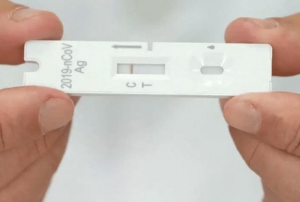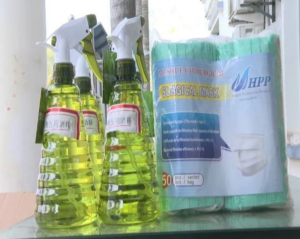
10 days of infection and symptoms are the sequelae? Experts explain the home observation limit time
As this wave of Omicron BF.7 variant infected patients passed the infection period, some questions related to “Yang over” and “Yang Kang” also troubled the recovered patients. With these questions in mind, this reporter interviewed Wen Daning, Director of the Department of Infectious Diseases at Wuhan Jinyintan Hospital on December 22. Wen Daning is also a member of the provincial and municipal joint expert group on Newcastle pneumonia, and has been engaged in clinical work on infectious diseases for more than 20 years, participating in the treatment of major epidemics such as SARS, bird flu and Newcastle pneumonia. Work.
After 7-10 days of illness, many people still have symptoms such as cough, diarrhea, dry and sore throat, night sweats, etc. Are these symptoms the continuation of the disease or the after-effects of the infection?
Wen Daning introduced that since February this year, we have been clinically exposed to Omicron infection, from BA.1, BA.2 to BA.5, to now the dominant viral strain BF.7. The symptoms of BF.7 infection are indeed somewhat different. These symptoms that appear during the recovery period are actually a process of recovery from an infection. Symptoms such as cough, diarrhea, dry throat, coughing, and night sweats that appear 7 to 10 days after infection, it is not called a sequelae. The medical term for sequelae is that we call them symptoms that are still present 3 to 6 months after the disease has been completely stabilized. Symptoms such as cough, diarrhea, dry throat and sore throat, and coughing up sputum (including some people coughing up bloody sputum), which are present in this wave of Omicron infected people, will gradually improve and recover as this disease progresses and time passes.
For example, for diarrhea, anti-diarrheal medicine is needed, as well as some dietary adjustments; for cough, expectorant medicine can be used to stop coughing, and if coughing up blood is more frequent, some medicine to stop bleeding is also needed. The principle of medication is symptomatic treatment.
2, the follow-up symptoms of these diseases, or not to carry?
Wen Danning said that this also needs to be based on each person’s own situation. If some people have some chronic diseases on their lungs, they are prone to lung infections in the winter and spring, so they cannot just carry on at this time, but should be actively treated symptomatically. Such as coughing up thick sputum, may be secondary to other infections, this time may use 3 to 5 days of antibiotics, eat a two or three days after the obvious sputum volume is reducing, the color of the sputum becomes lighter, from thick sputum into white bubble sputum, which means that anti-inflammatory is effective.
- Many infected people have lost their sense of taste and smell, is this because the virus has damaged the relevant nerves? Can it be restored?
Wen Danning said, the loss of taste and smell, we encountered more patients in the clinic, about 10%, especially this time BF.7 infection of patients, it seems that such patients are more. But the ones I saw in the clinic were all one-offs, and they all gradually recovered after 3 to 5 days. I don’t think it is the central nervous system that is affected, but maybe the peripheral neurons that perceive taste and smell are damaged once and for all, that’s why I see patients who have lost their sense of taste and smell gradually start to recover in 3 to 5 days. There are basically no patients who do not recover continuously, so this damage should not be permanent.
4、Most of the infected patients are significantly better on the 5th day, but some have fever for 5 or 6 days, what is the course of Omicron infection?
Wen Daning introduced that this wave of Omicron BF.7 infected people are different from those admitted before October, more infectious, most of them are mildly ill, but we are not saying that all of them should be mildly ill. The general feeling is that the symptoms are more severe at four or five days and start to recover by about a week. But in clinical practice, we have encountered patients who have not recovered for a week or whose fever has not come down for 5 days, then this group of patients should be careful, the disease may have progressed, it is better to go to the hospital to do a comprehensive examination, so that the doctor can assess the disease.
My advice is that if the fever is more than 5 days old and still above 39°C, this is definitely a case that needs to be seen. In normal people, the fever starts to go down in about 5 days. 5 days should be a limit for us to observe at home. If it starts to recover in 5 days, you can continue to observe it at home. If it is still getting worse after 5 days, you must go to the hospital at this time, so that the doctor can judge it. If you need to be hospitalized, the doctor will arrange for hospitalization, and if it is not serious, you will be instructed to continue taking oral medication at home.


Average Rating